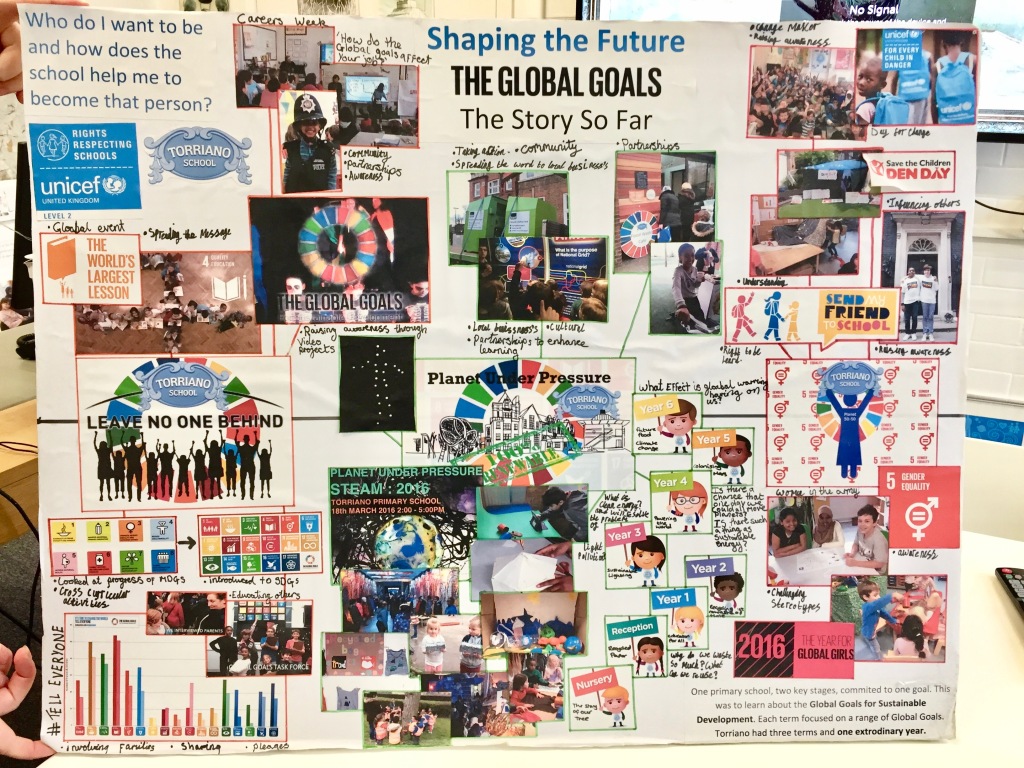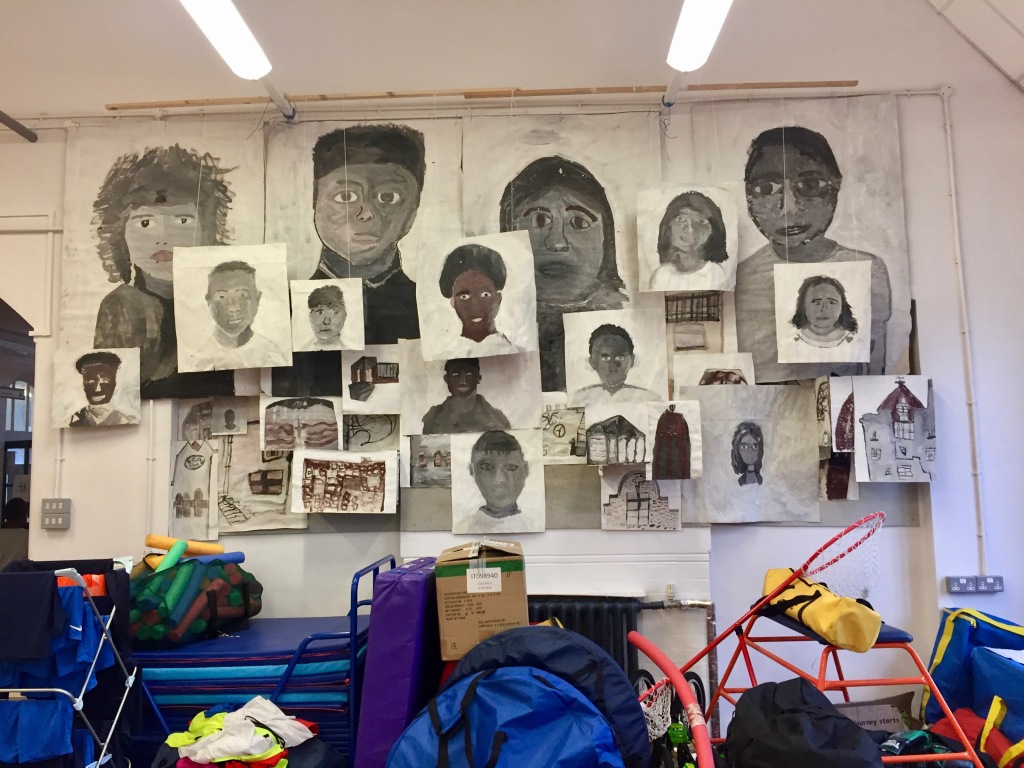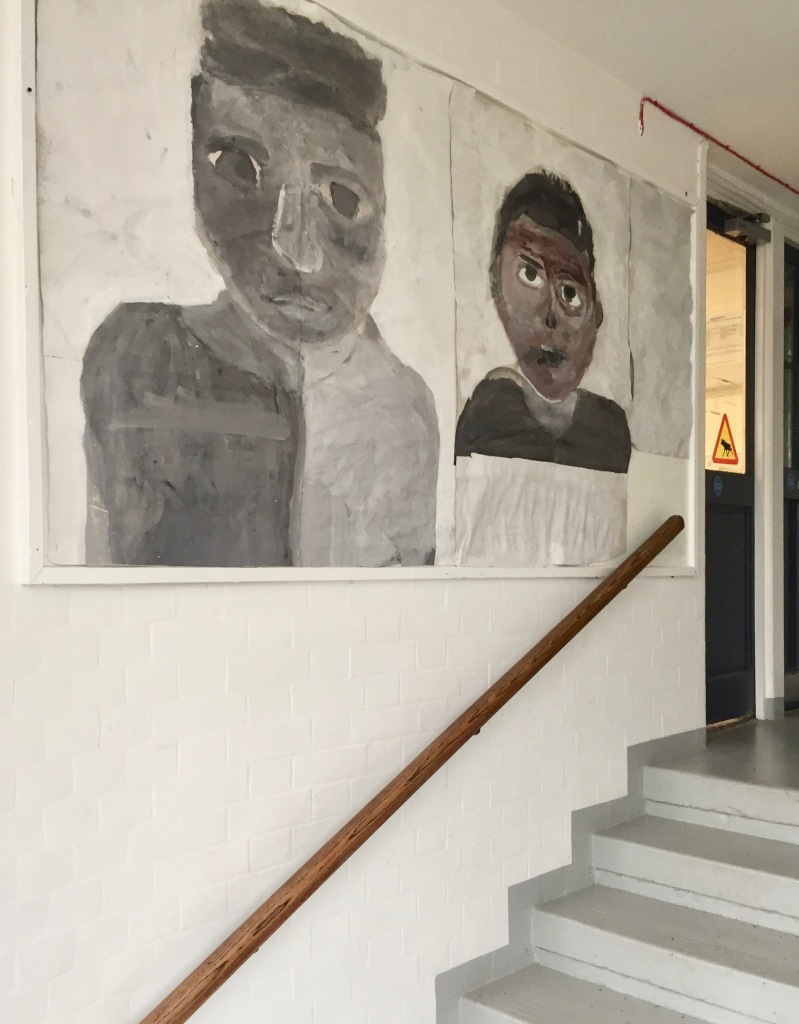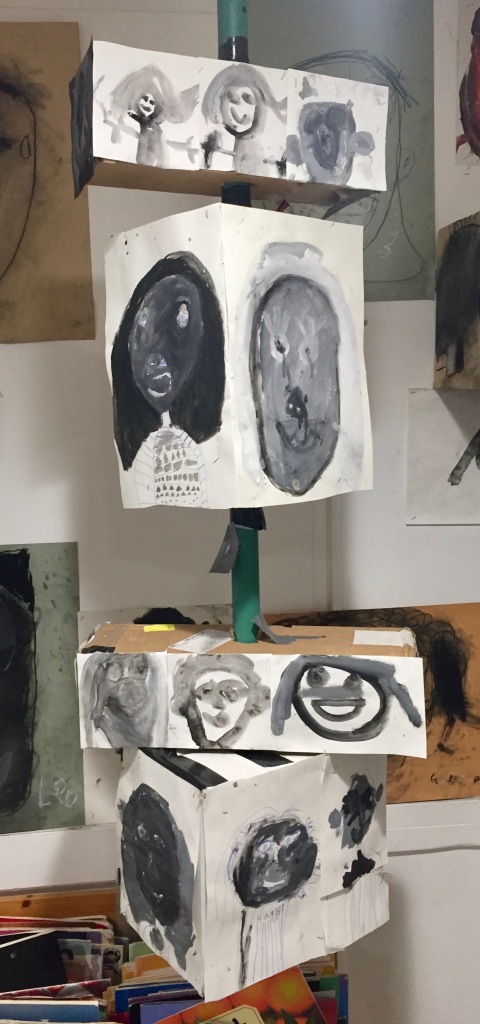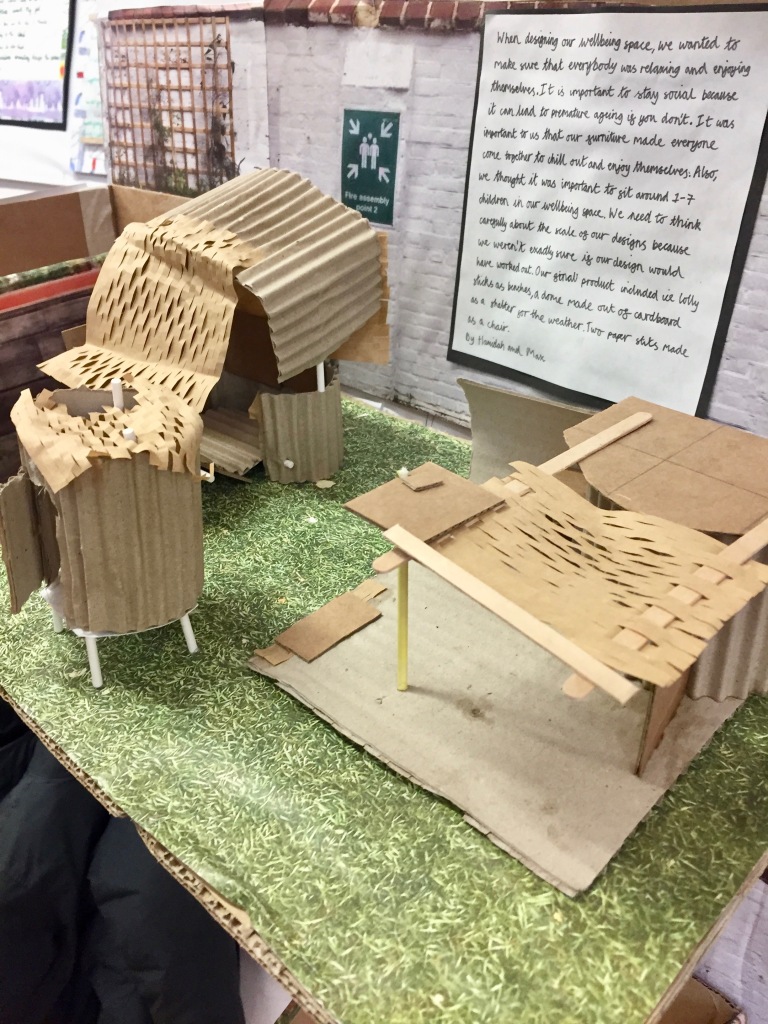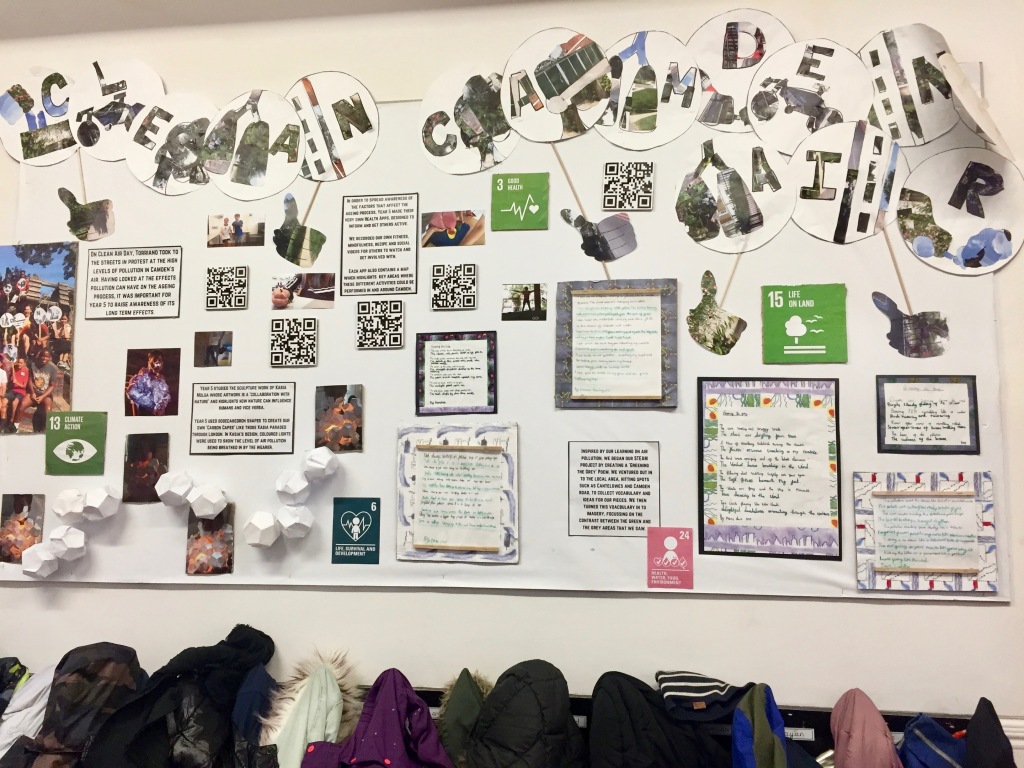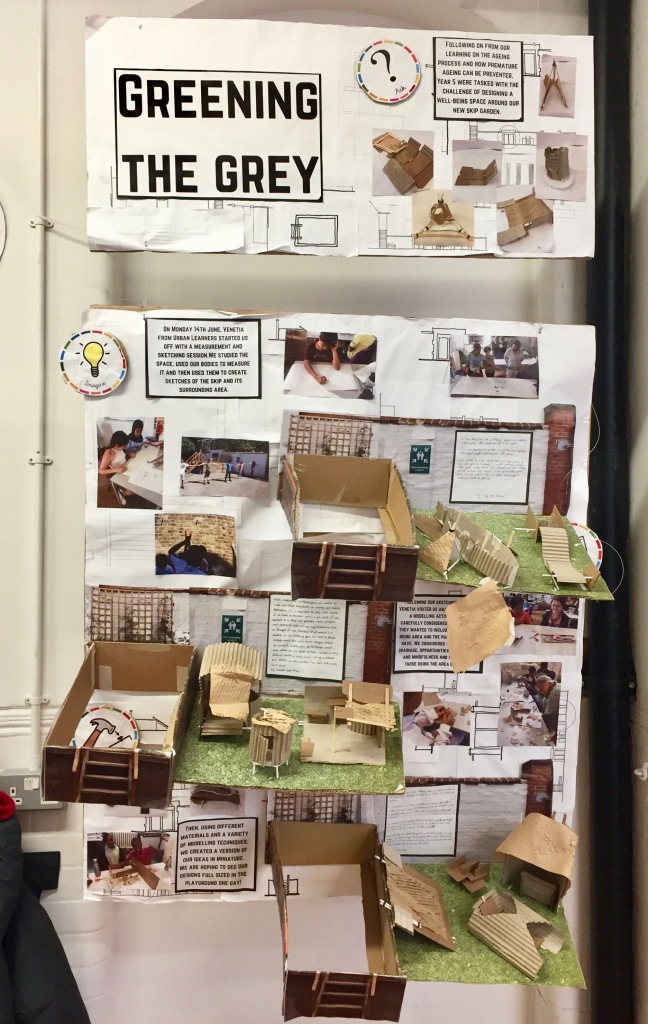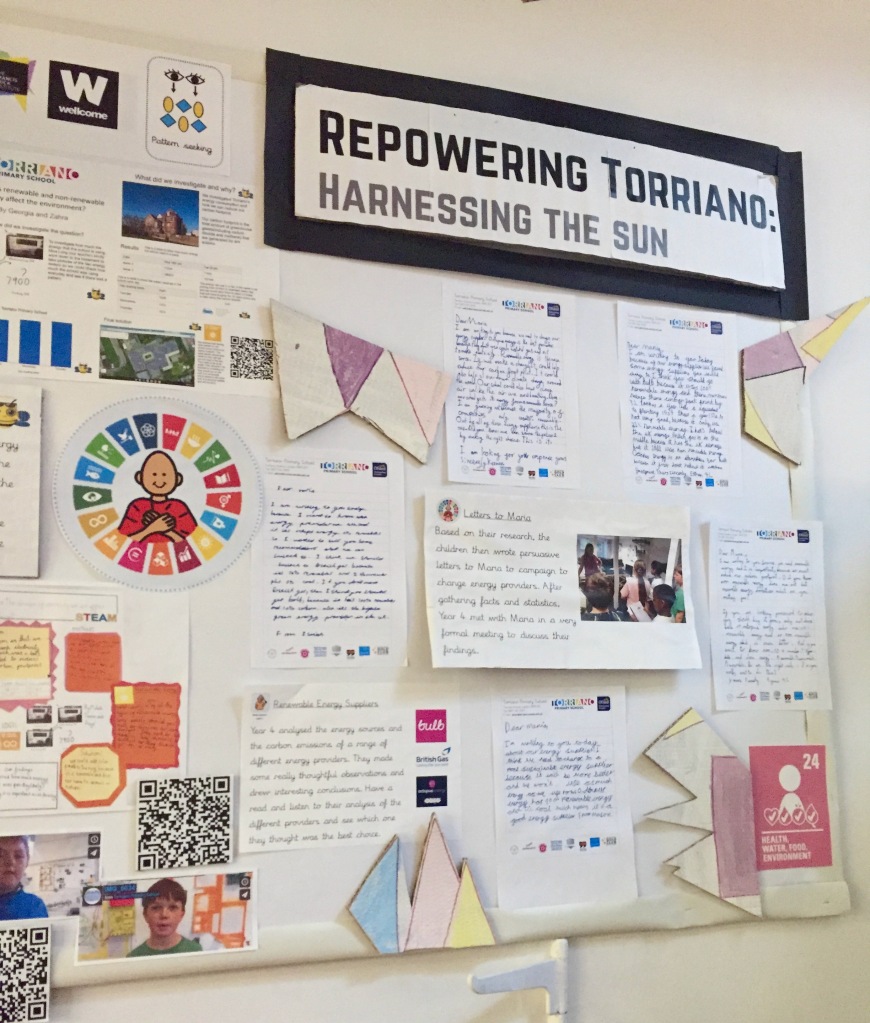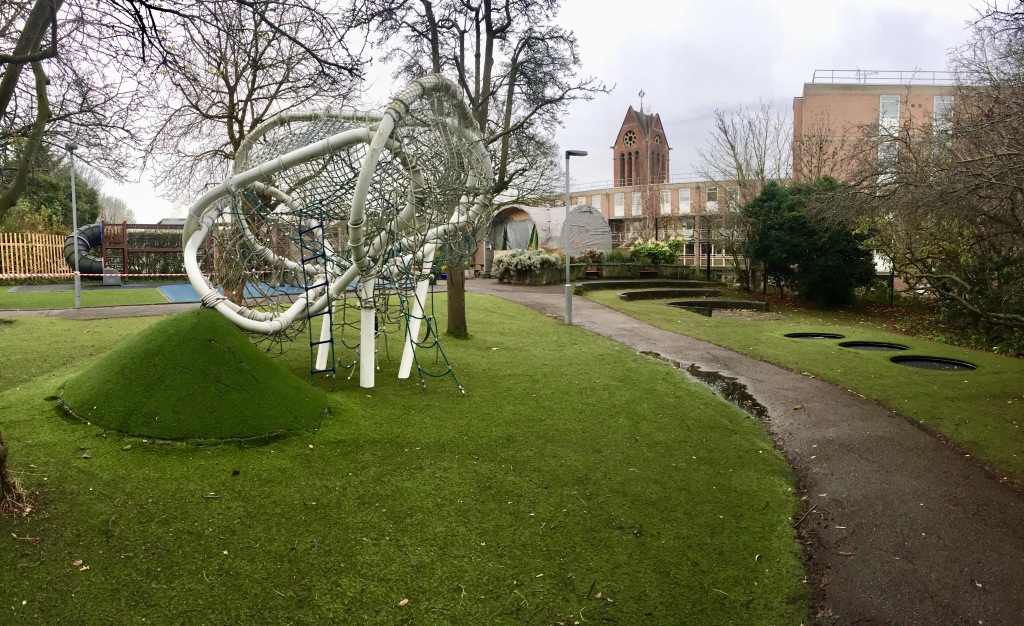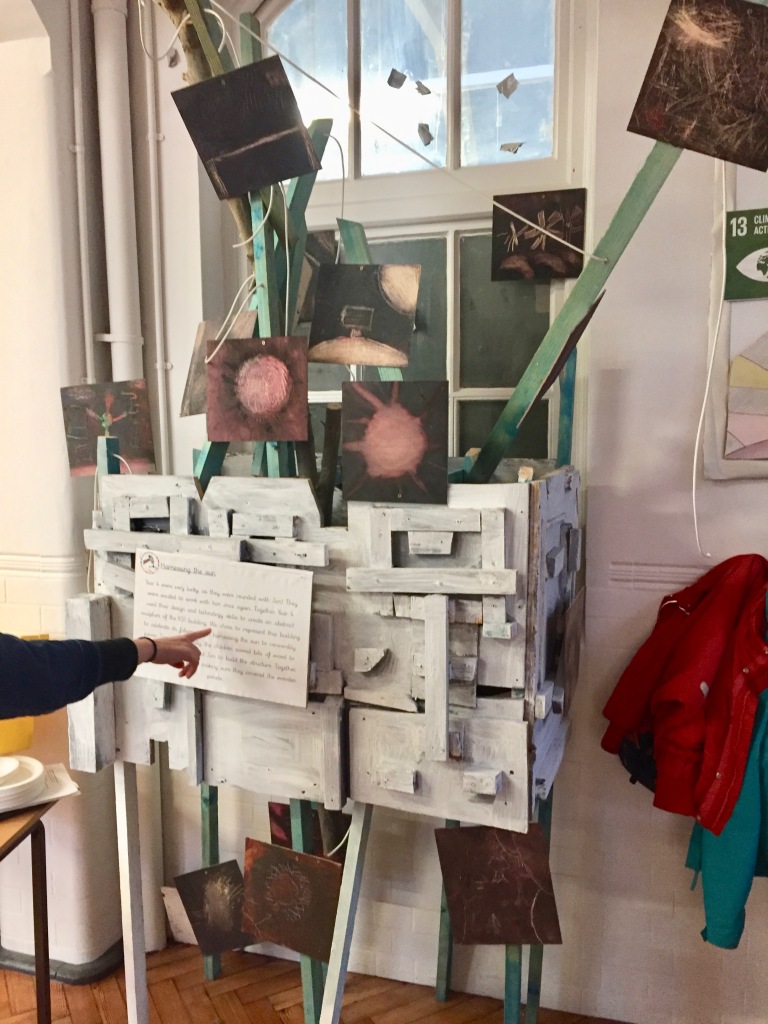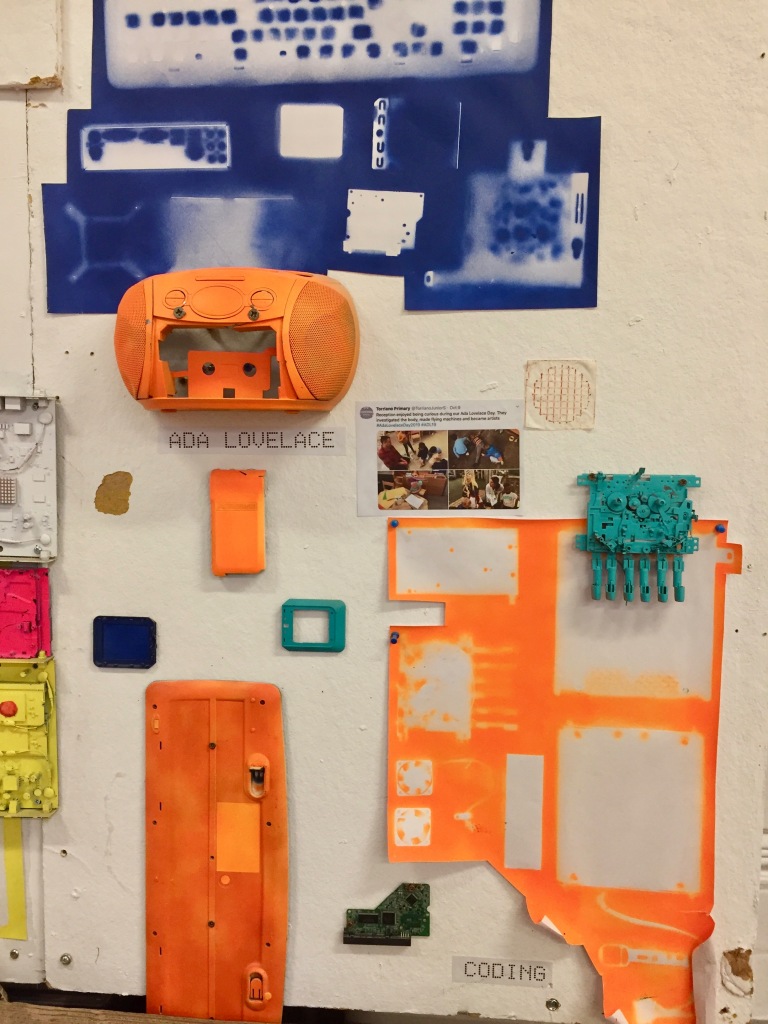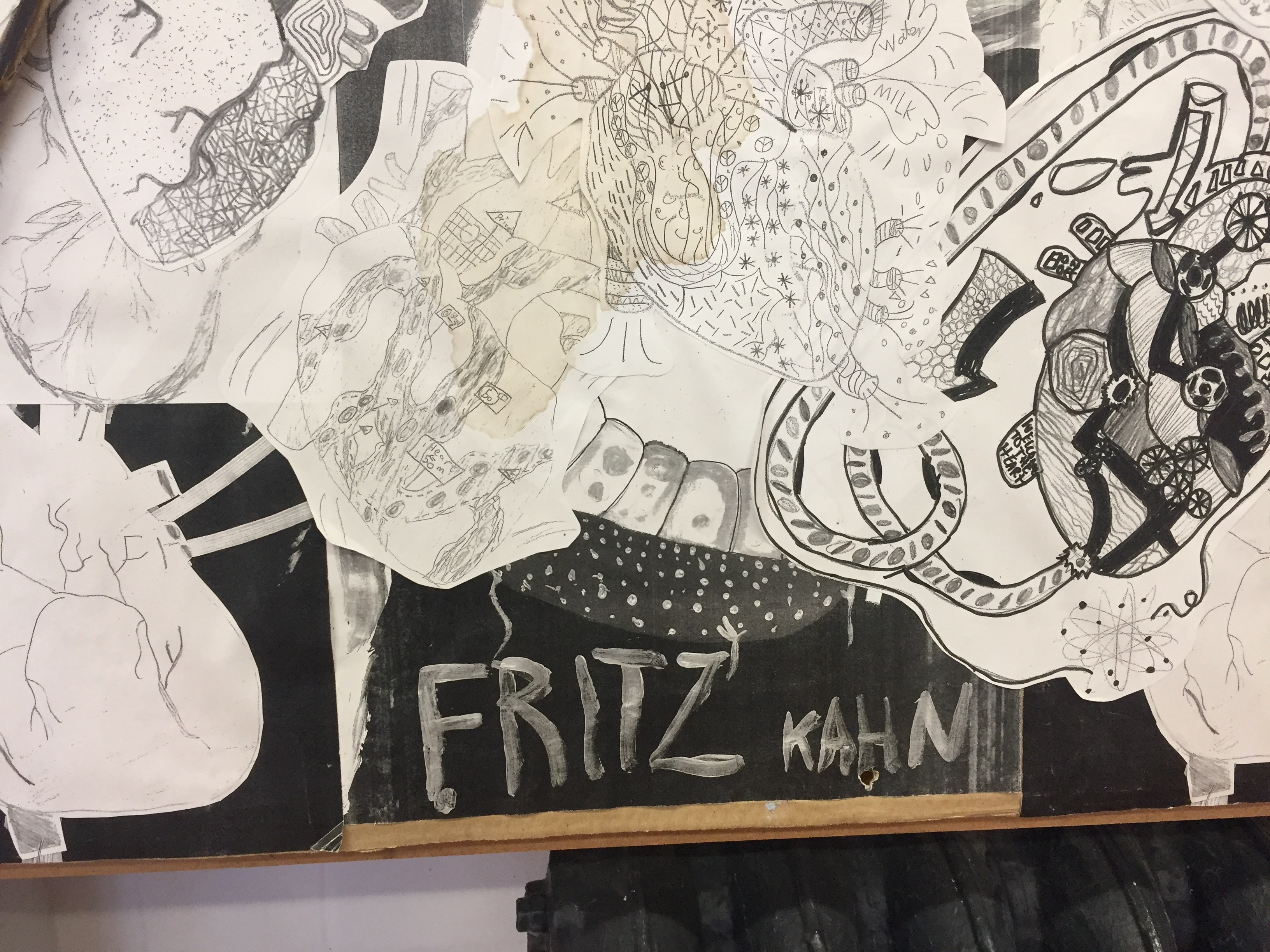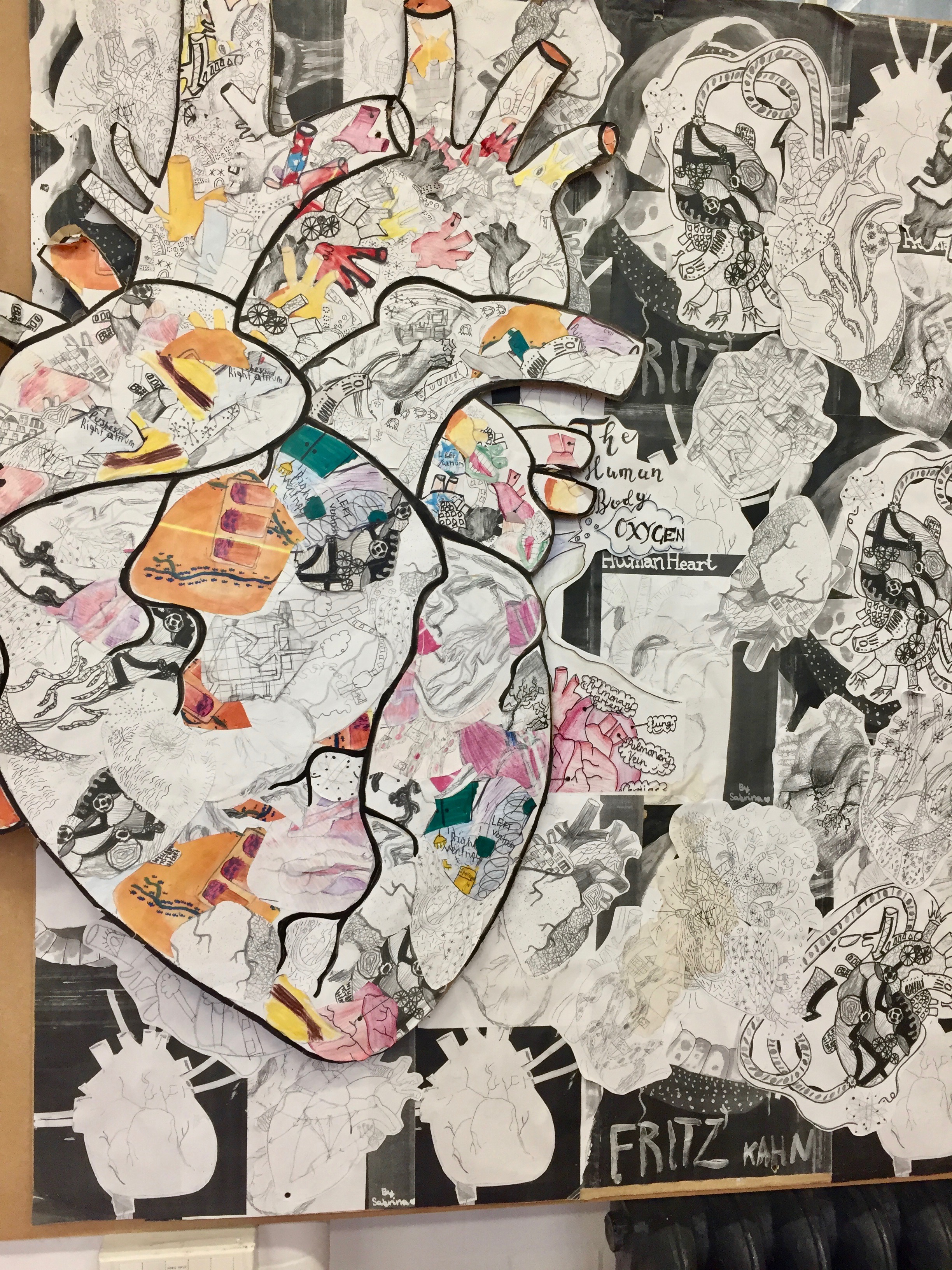
Our visit to Springfield Juniors in Ipswich corresponded with their festival for the Queen’s Platinum Jubilee. All day, the school was buzzing with parents and family members.
Musical theatre performances and choirs performed in the main Hall and also in the cool performance space (pictured above) that links the two main buildings. In other rooms, parents visited exhibitions of students’ arts and craft and soaked up the creativity that flows through this arts-rich school.
Up until this point in our visits, we had only heard about schools’ preparations for the big event. Today was the real thing! But as every teacher knows, and as Head teacher Louise Everitt explained, the performances and colourful displays of Queen-themed hats, cakes (being sold to raise funds) and other art works are ‘a combination of many weeks of work and planning’.
Louise told us that ‘it’s great to have parents coming back in to see exactly what we’re doing’ and how the event was an opportunity to share the students’ learning and promote conversations at home. The school also has regular Tea Afternoons where parents can learn about what their children are learning and gain some skills alongside them.
Some background: Springfield Juniors (344 students in Years 3 to 6) is a Rights Respecting school on a terraced street one mile outside of Ipswich town centre. While the school has a long tradition of arts and creativity, and still retains a strong commitment to the visual arts, there has been a recent shift of emphasis towards the performing arts.
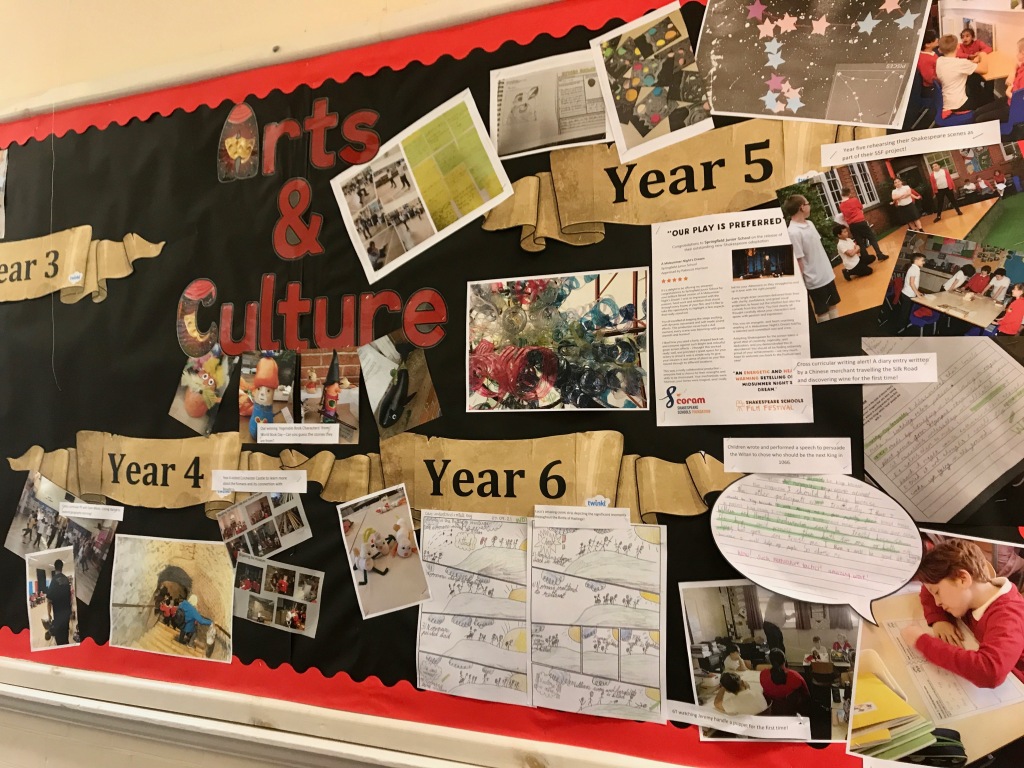
We spoke with Assistant Head and Arts and Culture lead Beth Taylor (they also have specialist teachers for Music and Art). She described how her recent year-long training on the Leaders for Impact course with the Royal Opera House Bridge had reenergised her commitment to arts education. With only 12 to 16 places offered each year and a rigorous application and interview process, Beth enthused about the power of being immersed in workshops, sessions and networks of ‘like-minded amazing people’ who advocate for arts and cultural educational.
‘I was passionate before,’ she told us, ‘but now feel like facilitating a cultural and creative education is my calling.’ Beth has now set up an Arts and Culture Network for leaders and teachers in local schools.
Clearly, Beth’s commitment to the arts and culture was contagious. Year 5 and 6 students talked enthusiastically about visits to and performances in Snape Maltings, a concert hall in a rural area about 20 miles from the school.
They had also made ‘jewellery for giants’ out of ModRoc. These massive rings and trinkets could be found all around the school:

Annually, Year 6 students work with the Young People’s Puppet Theatre (YPPT). The students told us how they had created their own knee-high puppet from a wooden kit. They had then chosen and made the clothes, created the hair, and painted the faces and hands. They told us how they had begun creating and decorating the sizable backdrops for the staging area, all the while learning how to operate the puppets and create scenes and stories.


Since our visit, Beth sent us some of the feedback from parents and students about the puppet performances:
‘YPPT helped me realise that just because we are young, it doesn’t mean we can’t do hard work. We can do anything we want now and in the future.’
‘What a fantastic opportunity for all the children. My son said it has been the highlight of his school experience so far.’
Read more feedback on this innovative project here (parents) and here (students).
Each of the other year groups has a half-term, timetabled project with an outside organisation or artist in addition to their regular arts provision. Year 5 work with the Shakespeare Schools Foundation/The New Wolsey Theatre (An Ipswich theatre); Year 4 with African drum-makers Wooden Roots and Year 3 with dance artist Sam Moss.
The rest of the year is punctuated with additional opportunities as and when they arise. These include working with performance poet, author and script writer Murray Lachlan Young, local illustrator and muralist Catalina Carvajal and local author Fred Sedgwick as well as trips to the local libraries and museums.
Beth told us how the intention is to allow children to absorb as many cultural and creative experiences as possible so they are able to form opinions, a sense of self and learn transferable life skills.

We spoke with the Arts Ambassadors. They told us how they are involved in planning and shaping the arts curriculum. Their opinions, suggestions and ‘voice’ feed into a cycle of learning. Each cycle has to start with a ‘Wow’ moment – usually a trip or visit from an artist – and end with a product, performance or exhibition. Their planning documents were attached to their own dedicated Arts Ambassadors board:
The arts here are embedded into all subjects. It is the ‘golden thread’ that runs through everything. The students’ skills, talent and creativity were on show on the busy walls, filled with a wide range of media, and in their sketchbooks.
The Battle of Hastings was represented in these long 3D murals and as a comic strip:


Soil erosion had been investigated through dance:

We also learned about the ‘creative careers assemblies’ where students get to interview a range of professionals from creative industries. Beth told us how she was keen to ensure that ‘what we’re doing in school reflects the culture of our society and increases the cultural capital of the children in terms of experience and opportunity.’
We asked about how the school’s arts and culture impact on the local community. Beth explained how ‘some of the parents didn’t get the opportunities that were providing for their children. Every child in this building impacts a myriad of people because we’re talking about some really large families and communities in this area.’
She went on to describe how the school are ‘doing the same for the parents as we’re doing for the children. It is all vicariously through them.’
With the feast of arts on offer on this special day, it was lovely to see parents and family members fascinated, amused and sometimes moved to tears by the children’s creativity.
We would like to thank Assistant Head and Arts and Culture Lead Bethany Taylor for organising our day and sharing her thoughts and experiences, Headteacher Louise Everitt, and the selection of Year 4, 5 and 6 students, and members of extra-curricular clubs that we spoke with.

You may also be interested in reading our recently-published Art, Craft and Design Rapid Evidence Review – a survey of published scholarly literature on art, craft and design in education.
















